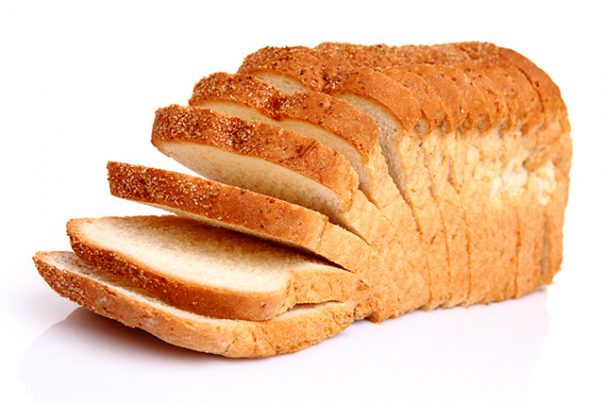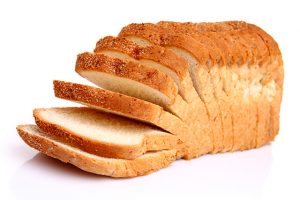
Sodium Stearoyl Lactylate – toxicity, side effects, diseases and environmental impacts
Thursday, November 23, 2017 by Zoey Sky
http://www.naturalpedia.com/sodium-stearoyl-lactylate-toxicity-side-effects-diseases-and-environmental-impacts.html

Sodium stearoyl lactate is a combination of stearic acid and lactic acid, and the final product is a mixture of several components. Stearic acid comes from plant or animal fat, although vegetable oil is used more often.
Sodium stearoyl lactate is a food additive used as an emulsifier and stabilizer, and it can be found in various bakery products. The Acceptable Daily Intake (ADI) for sodium stearoyl lactate is up to 20 milligram per kilogram (mg/kg).
Sodium stearoyl lactylate is often called SSL, and it appears a lightly colored powder. As an emulsifier, it helps keep oil and water mixed together, which is why it is often used for making baked goods. The food additive allows for more water to be used, which is a cheap ingredient.
Sodium stearoyl lactylate also helps increase the shelf life of food products because it keeps mold away. Dough conditioning also requires sodium stearoyl lactylate, which makes the gluten in bread stronger and also increases the volume of the loaf.
While vegetable oils are mainly used for sodium stearoyl lactate, the use of animal fat (such as pork) cannot be guaranteed, which is why several groups such as vegans, Muslims, and Jews avoid products with this food additive.
Sodium stearoyl lactate is also known as 25383-99-7, sodium stelate, sodium 2-stearoyllactylate, SCHEMBL156076, DTXSID8027872, 5793-94-2 (Parent), KS-000000HP, MFCD00152806, AKOS027327550, stearoyl-2-lactylic acid, sodium salt, AK326027, AN-17751.

List of known side effects
There is a lack of data available on human carcinogenicity, toxicity, mutagenicity, teratogenicity, and developmental toxicity of sodium stearoyl lactylate. However, it may cause a slight skin irritation and, at elevated temperatures, direct contact with this product can cause thermal burns. The food additive can cause slight irritation in the respiratory tract.
There is some small incidence of allergies (contact dermatitis) to sodium stearoyl lactylate. This causes the body to release inflammatory chemicals which can make the skin feel irritated and itchy.
If the eyes come in contact with sodium stearoyl lactylate, promptly flush eyes with warm water for at least 15 minutes.
Another possible adverse effect of sodium stearoyl lactylate is a food intolerance, or the “inability to properly digest or fully process certain foods,” which can cause illness and chronic symptoms. Take note that food intolerance is different from food allergy.
Body systems affected by sodium stearoyl lactylate
According to The Center for Science in the Public Interest and the Material Safety and Data Sheet, sodium stearoyl lactylate is a safe product. However, as an individual chemical, the food additive may cause slight skin or eye irritation.
If inhaled in its pure form, sodium stearoyl lactylate may be slightly irritating to the respiratory tract. As a food additive, sodium stearoyl lactylate is not used in the form of the pure chemical, so it is not hazardous or toxic.
Items that can contain sodium stearoyl lactylate
Sodium stearoyl lactylate can be found in various food products such as baked goods, tortillas, cereal, chewing gum, dehydrated fruits and vegetables, pancake mixes, instant rice, and pudding mix.
How to avoid sodium stearoyl lactylate
Sodium stearoyl lactylate is often used in yeast raised bakery products, so always check what ingredients were used to make these items before purchasing anything. The following products can also contain sodium tearoyl lactylate: waffles, pastas, desserts, icings, fillings, toppings, sugar confectioneries, powdered beverage mixes, creamers, cream liqueurs, dehydrated potatoes, snack dips, sauces, gravies, dietetic foods, minced and diced canned meats, and pet food. Try to avoid these products, or find healthier alternatives.
Where to learn more
- Why McDonald’s Happy Meal hamburgers won’t decompose – the real story behind the story
- Surprise Ingredients in Fast Food
- Poison.news
- Chemicals.news
- Toxins.news
- Pesticides.news
Summary
Sodium stearoyl lactate is a food additive used as an emulsifier and stabilizer, and it can be found in baked goods and other food items.
Sodium stearoyl lactate a combination of stearic acid and lactic acid.
Sodium stearoyl lactylate is a generally safe product, but may cause slight skin or eye irritation in its pure chemical form.
Sources include:
Tagged Under: Tags: Sodium stearoyl lactylate





